I ’ ve been working on this guide for quite some time now, and I ’ thousand positive it ’ ll help oneself you build your very own customs personal computer. Let ’ s begin with how to pick the right PC-Parts for your human body. If you already have your PC-Parts picked, skip down to the PC-Assembly section .
How to Pick Components for Your PC (Workstations/Gaming PCs/Office PCs)
The components you choose should cater to your specific requirements. In fact, this is the beauty of custom personal computer builds – you can modify the shape, size, budget, and performance to fit your specific use case without compromising on any aspect. Depending on the parts you pick, your budget can range from a few hundred dollars to a few thousand. however, you should ensure that you balance your budget allotment across respective components .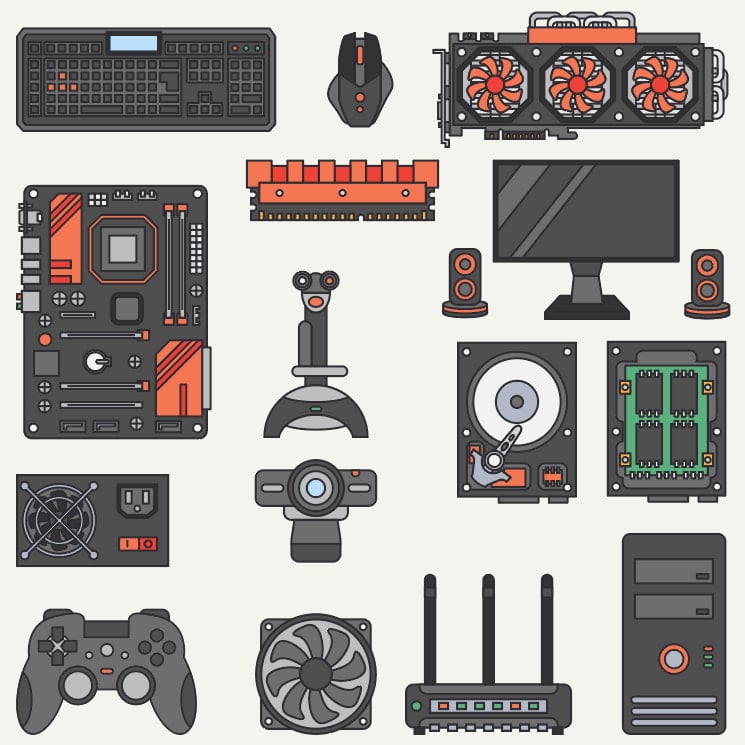 furthermore, you should besides get the hardware and performance that you’ll put to use. Another critical expression to consider is compatibility. Pick your parts cautiously because every component won ’ thymine be compatible with the early. I ’ ll go over compatibility arsenic good when addressing each component to simplify your leverage decisions. Every personal computer can be broken down into seven discrete components or parts :
furthermore, you should besides get the hardware and performance that you’ll put to use. Another critical expression to consider is compatibility. Pick your parts cautiously because every component won ’ thymine be compatible with the early. I ’ ll go over compatibility arsenic good when addressing each component to simplify your leverage decisions. Every personal computer can be broken down into seven discrete components or parts :
- CPU/Processor
- Motherboard/Mainboard
- Memory/RAM
- Graphics Card/Video Card
- Storage (HDD, SSD)
- Power Supply Unit/PSU
- Case/Cabinet
In addition to these parts, you ’ ll need peripheral accessories like a mouse, keyboard, and a monitor as well .
CPU and Motherboards: Picking the Right Combination
When it comes to desktop CPUs, there are two brands that you can choose from – AMD and Intel. This choice dictates what motherboard you can and can not pick .
Motherboard Form Factors
Before picking motherboards, it ’ s crucial to understand the assorted sizes out there. Not every motherboard will fit into every case. Some people prefer compact systems, while others like large ones. You can pick from a variety show of motherboard form factors to suit your personal computer cabinet and personal preferences. Intel developed the ATX specification in 1995 to standardize board plan and improve on older implementations .
- ATX (Advanced Technology eXtended) – One of the most popular form factors. It offers a fairly standard layout and usually features 4 DIMM (memory/RAM) slots along with multiple full-length (x8/x16) PCI-E slots.
- E-ATX (Extended ATX) – One of the largest form factors available for mainstream use. It typically offers the most features and extensibility – giving you flexibility with regards to peripherals. These motherboards should come with 3 or more full-length PCI-E slots.
- M-ATX (Micro ATX) – A compact implementation of the ATX standard. It usually features 2 or 4-DIMM configurations for memory and very rarely features more than 2 full-length PCI-E slots. It’s an excellent choice for those wanting a reasonably compact build.
- M-ITX (Mini ITX) – One of the most compact form factors widely available for mainstream computers. Although they have limited extensibility due to their diminutive size, they have no peer when it comes to building extremely compact PCs.
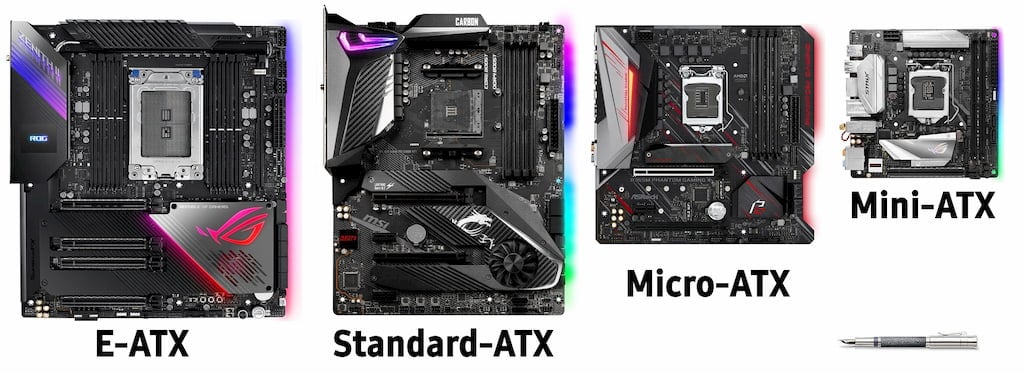
Sockets and Chipsets
You ’ ll need an Intel-compatible motherboard for an Intel CPU and an AMD-compatible motherboard for an AMD CPU. Both brands use different socket types, and that is why you can’t swap CPUs from different brands. Sockets can even vary across processor generations from the same company. For mainstream Intel CPUs, you ’ ll need a motherboard with an LGA 1151 socket. These motherboards will support both 8th and 9th generation CPUs from Intel. For mainstream AMD CPUs, you need a motherboard with the AM4 socket. These motherboards will support all AMD Ryzen CPUs and APUs. however, the socket alone doesn ’ triiodothyronine decide compatibility, which is why I recommend shopping by chipset alternatively. A chipset controls the flow of instructions between any processor and external devices. here ’ s a table with commend chipsets for the most popular processors out there. If you don ’ triiodothyronine find your central processing unit in this tilt, do go ahead and leave a comment below. I ’ ll do my best to help out !
CPURecommended ChipsetReason8th and 9th Generation Intel Core i9, i7, and i5 Processors (K series)Z390/Z370‘K’ CPUs from Intel have unlocked cores and can be overclocked. Only the Z390 and Z370 chipsets support this capability.8th And 9th Generation Intel Core i9, i7, i5, and i3 Processors (non-K Series)H370/B360/H310Since non – ‘K’ CPUs from Intel aren’t overclockable, you can safely go with cheaper chipset options that don’t support this capability.AMD Ryzen Processors (1st, 2nd, and 3rd Generation) and AMD Ryzen-Based APUs (2400G, 3400G, etc.)X570/B450/A320All motherboards with these chipsets come with an AM4 socket. Pick according to your budget and requirements. Follow this Ryzen motherboard guide for additional information.AMD Ryzen Threadripper Processors (1st and 2nd Gen)X399Only available Chipset for 1st and 2nd Gen Threadripper CPUsAMD Ryzen Threadripper Processors (3rd Gen)TRX40Only available Chipset for 3rd Gen Threadripper CPUsIntel HEDT X-Series CPUs 9th and 10th GenX299Only available Chipset for 9th and 10th gen Intel X-Series CPUs
RAM/Memory
Depending on its form factor, you ’ ll by and large have access to 2, 4 or 8 RAM slots on your motherboard of choice. This dictates the full amount of memory you can install in your system. If you ’ ve heard the terms “ mono, ” “ dual-channel, ” or “ quad-channel ” memory and have no hint what it means in terms of performance, you can find an explanation in our memory template. modern PCs in today use DDR4 memory .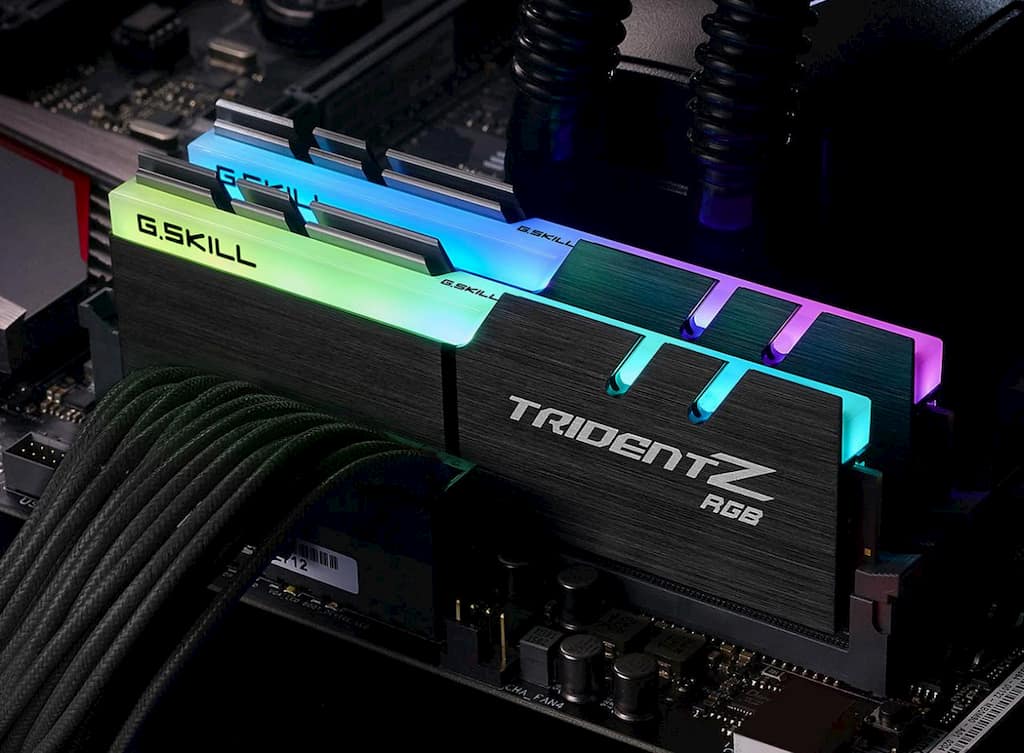 The layout of different standards of RAM does vary, then, you can’t install DDR3 memory into a DDR4 slot. There are a few factors you should consider before settling on what RAM to buy, most importantly – capacity, memory clock, and CAS Latency. presently, there ’ s no better rate than a 16GB ( 2×8 GB ) DDR4 3200 MHz CL16 Memory kit. You can find options from Corsair, Crucial, G.Skill, and a few others at attractive prices. If you ’ re curious about how memory works and what factors you should consider before deciding on one, take a spirit at our RAM buy guidebook !
The layout of different standards of RAM does vary, then, you can’t install DDR3 memory into a DDR4 slot. There are a few factors you should consider before settling on what RAM to buy, most importantly – capacity, memory clock, and CAS Latency. presently, there ’ s no better rate than a 16GB ( 2×8 GB ) DDR4 3200 MHz CL16 Memory kit. You can find options from Corsair, Crucial, G.Skill, and a few others at attractive prices. If you ’ re curious about how memory works and what factors you should consider before deciding on one, take a spirit at our RAM buy guidebook !
Graphics Cards
A graphics card ( GPU ) typically handles and generates a feed that outputs to a monitor. If you ’ re only consuming media and browsing the web, you don ’ t need a mighty GPU. however, if you ’ ra bet on, editing videos, designing 3D art, or generating complex scenes, and want the best experience, you should consider allocating a good chunk of your budget to this component. here ’ s a flying look at the best value options right now :
Price TierRecommended Graphics Card Under $100 Geforce GT 1030$150-$200Radeon RX 580$200-$300GeForce 1660Ti$300-$400Radeon RX 5700
The options listed above are great for most users. However, if you’re planning to 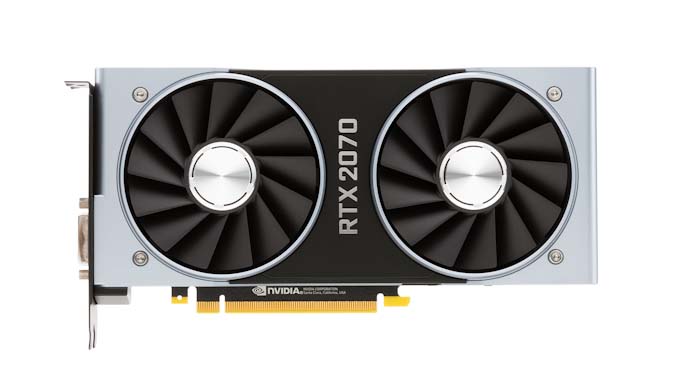 The options listed above are great for most users. however, if you ’ re design to play games at high resolutions or set up a workstation for professional work, you should consider consulting benchmarks charts and vary your budget consequently. The presently most herculean ( which is not specifically targeted at professional practice ) graphics batting order is the GeForce RTX 2080Ti with a price tag of well over $ 1000 .
The options listed above are great for most users. however, if you ’ re design to play games at high resolutions or set up a workstation for professional work, you should consider consulting benchmarks charts and vary your budget consequently. The presently most herculean ( which is not specifically targeted at professional practice ) graphics batting order is the GeForce RTX 2080Ti with a price tag of well over $ 1000 .
Storage
storage is available in the shape of SSDs and HDDs. HDDs or Hard Disk Drives offer high storage capacities but at much slower speeds. SSDs or Solid State Drives, on the other hand, offer relatively lower repositing capacities but at much higher data read/write speeds .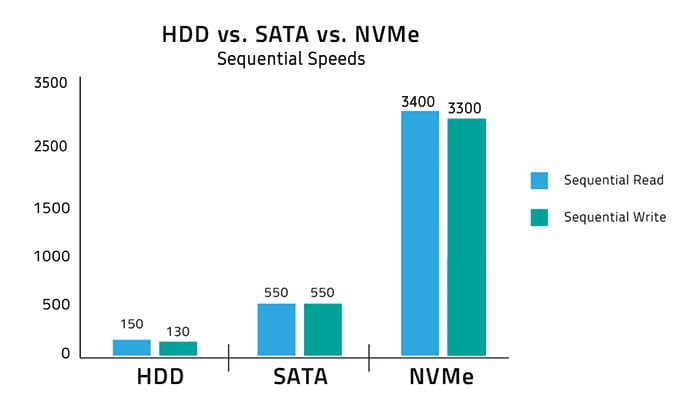 Unless your budget limits you from doing so, grab a copulate of SSDs for your build. NVMe SSDs are faster and pricier than SATA SSDs so consider your workload carefully. If you ’ re regularly handling production workloads with boastfully raw files, an NVMe SSD is the way to go. however, you can install your OS and other applications on a SATA SSD without compromising on performance .
Unless your budget limits you from doing so, grab a copulate of SSDs for your build. NVMe SSDs are faster and pricier than SATA SSDs so consider your workload carefully. If you ’ re regularly handling production workloads with boastfully raw files, an NVMe SSD is the way to go. however, you can install your OS and other applications on a SATA SSD without compromising on performance .
Power Supply
All the components in your system need a reliable, steady issue of ability. A Power Supply Unit ( PSU ) does just that ! They come in modular, semi-modular, and regular variants. If you ’ rhenium reasonably nitpicky about cable television management and would rather avoid any idle cables, pick a modular or semi-modular PSU. They ’ ll ensure that you use only the wires that your system needs . A widespread error is compromising on the quality of a baron supply to focus your budget on other aspects of the arrangement. Don ’ metric ton do this. A bum baron issue can even cause permanent price to your components. I recommend shopping for a 500W 80-Plus Bronze Rated PSU at the very least. Use this popular PSU tier list to lock down a choice depending on handiness in your region ; use this baron supply calculator to check the electrical power you ’ ll indigence for your system.
A widespread error is compromising on the quality of a baron supply to focus your budget on other aspects of the arrangement. Don ’ metric ton do this. A bum baron issue can even cause permanent price to your components. I recommend shopping for a 500W 80-Plus Bronze Rated PSU at the very least. Use this popular PSU tier list to lock down a choice depending on handiness in your region ; use this baron supply calculator to check the electrical power you ’ ll indigence for your system.
80 Plus PSU RatingWhat Does it Mean?80 Plus At least 80% efficiency at 20%, 50%, and 100% load.80 Plus BronzeAt least 82% efficiency at 20% load, 85% at 50% load, and 82% at 100% load.80 Plus SilverAt least 85% efficiency at 20% load, 88% at 50% load, and 85% at 100% load.80 Plus GoldAt least 87% efficiency at 20% load, 90% at 50% load, and 87% at 100% load.80 Plus PlatinumAt least 90% efficiency at 20% load, 92% at 50% load, and 89% at 100% load.80 Plus TitaniumAt least 92% efficiency at 20% load, 94% at 50% load, and 90% at 100% load.
As you can see, unless you’re running a very power-hungry system, the power savings at each tier will be minimal. For most users, an 80 Plus Bronze PSU is the sweet spot between quality and price. If you do want to spend a bit more, I recommend a jump to gold and above. As you can see, unless you ’ re running a very power-hungry system, the power savings at each tier will be minimal. For most users, an 80 Plus Bronze PSU is the sugared spot between quality and price. If you do want to spend a bit more, I recommend a Don ’ t bother with silver unless you ’ re getting a fantastic batch on one .
Case/Cabinet
Cases are available in different sizes. They ’ ra named to indicate the motherboard form factors they support. For model, an ATX case can house an ATX, or smaller, motherboard easily. sol, you can use an ATX subject with a Mini-ITX motherboard, but a Mini-ITX cabinet international relations and security network ’ t compatible with an ATX motherboard. If you ’ re building a robust system that ’ ll beget loads of heat, airflow becomes paramount. however, most modern cases have good airflow, so you don ’ t need to worry besides much in this gaze. A front-mesh style cabinet does offer the best publicize intake .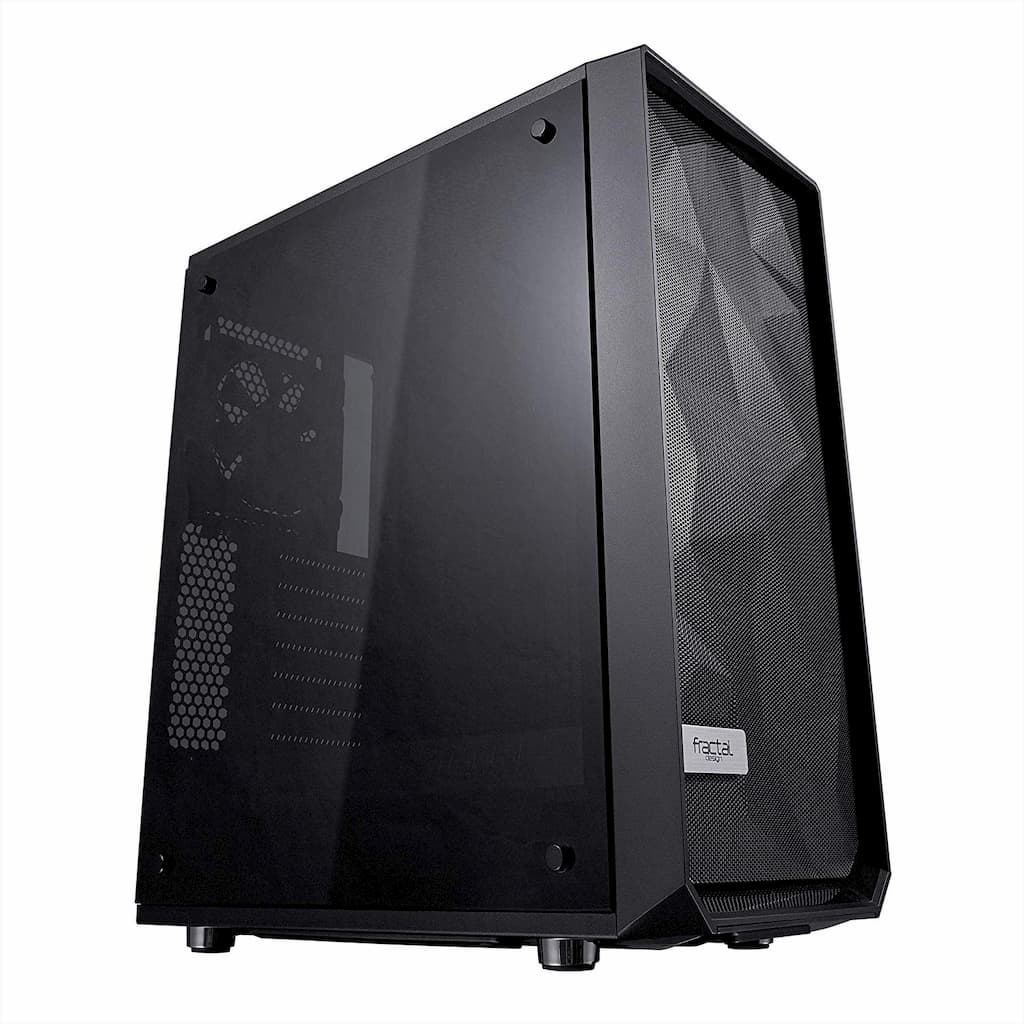 however, base your option on your preference more than anything else. Although an ATX cabinet will be compatible with most of your components, make indisputable you check graphics card duration and CPU cooler clearance. In case you ’ re using a third-party CPU cool ( and not the one included with your processor, if any ), you have to make certain it ’ ll paroxysm into your event. Aesthetics play a significant role when getting a personal computer shell. The event is not something that you ’ ll deepen a year or two down the line. It ’ s a long-run commitment. So, choose wisely!
however, base your option on your preference more than anything else. Although an ATX cabinet will be compatible with most of your components, make indisputable you check graphics card duration and CPU cooler clearance. In case you ’ re using a third-party CPU cool ( and not the one included with your processor, if any ), you have to make certain it ’ ll paroxysm into your event. Aesthetics play a significant role when getting a personal computer shell. The event is not something that you ’ ll deepen a year or two down the line. It ’ s a long-run commitment. So, choose wisely!
Building Your PC
now that we ’ ve gathered all our components, it ’ sulfur time to get build. These are the Parts we will be assembling in this template. Don ’ metric ton worry if you don ’ t have the accurate same components as most are assembled in a very exchangeable way :
- CPU: AMD Ryzen 5 3600
- CPU-Cooler: Both Stock and a 3rd-Party Cooler (Cooler Master Hyper 212 EVO)
- Motherboard: MSI B450 Tomahawk MAX
- RAM: 16GB (2x8GB) Corsair Vengeance 3600Mhz CL16
- GPU: XFX Radeon RX570
- Storage: Samsung 860 EVO and Samsung 970 EVO
- PSU: Corsair CX550M
- Case: beQuiet Pure Base 500
Tools Needed
- Philips Head Screwdriver (ideally magnetic)
- Non-Carpeted Surface
- Zip ties (Nice-to-have / 10-15)
immediately, you can use an anti-static strap if you ’ re concerned about inactive electricity ruining your components. however, you can avoid this by building on a bare, grounded surface and touching the bare metal of your PC-Cabinet before handling a sensible separate like a graphics card. This might seem obvious, but you need to have a sneak, keyboard, monitor and a USB-Drive with a Windows 10 installer on it a well .
Getting Started
I recommend installing the CPU, CPU cool, and RAM before installing the motherboard in your event. It ’ ll make things much easier !
1. Motherboard
Take the motherboard out of the box and protective wrapping ( touch the alloy of your cabinet first ). If you don ’ triiodothyronine have an anti-static surface to work on, use the motherboard box. Place the board on top of the box before continuing .
2. CPU Installation
If you have an Intel CPU, then gently push down on the memory weapon, slide it out and lift it – exposing the socket. gently place the CPU in the socket. Match the golden triangle on the bed left of the CPU with the triangle on the socket. The CPU can entirely slot into its socket in this orientation. You won’t need to use any force. If you have both triangles lined up, the CPU will fall into place without any feat. now, slide the bracket rear. If it is secured, then the plastic cover should pop off mechanically. It might fly off, so don ’ triiodothyronine worry. That ’ mho normal. On the AMD side of things, the facility process is childlike and reasonably much the lapp. Lift the retentiveness weapon, match the triangles on the central processing unit and the socket. Once the CPU is in place, lower the retentiveness arm back and secure it into stead. And a Closer look : That is all that you need to do to install the CPU. Simple, right ? Let ’ s proceed .
3. Memory
following, let ’ s get our RAM installed. You ’ ll see latches on either side of the RAM slots ( or just a single latch in a few budget motherboards ). Push down on the latches to open them. The contact pins on your RAM will have a longer and shorter side. It goes in lone one way, so align them correctly. Use the notches at each end to guide the stick down and push down on both ends together. This does take a sting of force out, and you will hear two clicks – indicating that the RAM is nowadays dependable in its slot. If you don ’ triiodothyronine listen clicks, re-check if your RAM is correctly aligned with its slot. If you ’ re using two memory sticks, install them in slots 1 and 3 or 2 and 4 – a criterion configuration in most motherboards for dual-channel memory. Consult the Motherboard Manual to be wholly sure though. And a closer look :
4. CPU Cooler
now that the CPU and RAM are in place, you can install the CPU cooler. In some cases, you do not have enough room to install the RAM if you install the CPU cooler first. That is why I recommend installing the RAM inaugural. thermal Paste normally comes pre-applied on a box CPU cooler. however, a few botched attempts at installing the cool might necessitate re-application, so, keep some thermal paste on stand-by. CPU-cooler facility processes vary from cooler to cooler. even Intel and AMD stock coolers have different installation methods. however, if you ’ re using a store cool, the installation should be easy. An Intel stock cool normally doesn ’ t need any screws. precisely place the cool over the CPU, align the four pins with the four cooler installation holes in the motherboard. Push depressed on the pins diagonally and twist to lock into seat. ( constantly consult the CPU-Cooler manual besides ) On the other hand, the AMD stock certificate cool needs to be screwed in with a common Philips Head Screwdriver. In this casing, you ’ ll comment a backplate on the back of your motherboard. Make certain that it stays aligned with the holes in your motherboard. now install the CPU cooler by placing it over the CPU and screwing it in diagonally. If the backplate is aligned correctly, this should lock it into place. Third-party coolers excessively come with their own direction manual of arms. They ’ ll besides come equipped with brackets for all kinds of CPU sockets. therefore, it doesn ’ deoxythymidine monophosphate topic whether you have an Intel or AMD CPU. Nonetheless, double-check for socket support when buying a CPU cool. AMD/AM4, The following television shows the installation of an AMD Stock Cooler ( In this subject the AMD Wraith CPU-Cooler ), which already has Thermal Paste applied to the bottom of the Cooler : AMD/AM4, The following video recording shows the facility of a 3rd Party Cooler ( In this case the Cooler Master Hyper 212EVO ), which does not come with pre-applied Thermal paste. manually applying a pea-sized “ blob ” of Thermal paste onto the CPU before installation is required : After applying the Thermal paste you can place and screw in the Cooler as per the Cooler ’ s manual : As there are so many different CPU-Cooler manufacturers who all have their own method acting of attaching the CPU-Cooler to the Motherboard, consult the CPU-Cooler facility instructions. We admit, the CPU Cooler Manual can be frustrating and looks complicated, but after some studying it turns out to be quite simple. CPU-Cooler installation manuals are normally therefore complex because the Cooler is supposed to fit on many different Socket types, each socket though normally requiring a slightly adjusted instruction.
once you find your specific socket and instructions in the manual and read through it a couple of times, though, installation is usually a breeze.
5. Motherboard installation
now that you have the CPU, RAM, and CPU cool installed on the motherboard, you can fit the motherboard into your character. Strip your case by removing both side panels. You can remove the pre-installed fans if you want to use custom Case-Fans. Check that the case has pre-installed motherboard standoffs and that they align with the holes on the motherboard. Find the motherboard I/O shield and push it into the rectangular slot at the back of the personal computer case. Make surely that it is the right side up and matches the ports on your motherboard. You might have to use a bit of wedge to pop it into target. careful though ; they are astute little buggers. They will draw blood. ? place the motherboard inside the chassis and line it up with the holes in the I/O shield. Some motherboards come with integrate I/O shields then you can slide them in. once you have done this, the standoffs should align with the holes on the motherboard, and you can screw it into home. Do not use besides much impel when using screws on your motherboard. You don ’ deoxythymidine monophosphate want to damage it. besides, make sure there is no curious draw stabbing the back of your board. It ’ ll cause it to bend and might even damage it. Account for every standoff before continuing onto the adjacent tone .
6. Storage
now that your motherboard is safely ensconce inside the font, we can add storage. Most modern cabinets have memory bays for both SSDs and HDDs. All you need to do is slide the drive into place and screw it in. Some mount solutions are tool-less, and the drive will click into position when you close the memory bay. Some Cases might require you to screw the SATA SSDs onto the back side of the Case, as you can see in the play along clip : If you have an M.2 SSD, it will be installed directly onto the motherboard ’ randomness M.2 slot. You alone need a single prison guard to hold it in target. SATA SSDs and HDDs need to be connected to your motherboard via SATA cables, and they besides need to be plugged into your PSU for office ( PSU facility follows ) .
7. Power Supply Unit
now that you have most of your components installed, you need to give them power. If you have a modular baron add, then you can use the cables that you need, if not then you will need to do some cable management ( stuffing ) late on. If your case has a discriminate enclosure for your PSU, you ’ ll have to install it from the binding of the case. If not, you can do it from the front. just slide the PSU into place and make sure the side with the D/C Power faces the right direction ( towards the back/outside of the case, the same commission as the I/O ports of your motherboard ). besides, the fan-side of the PSU should normally face where there is a grill in the Case, so it doesn ’ deoxythymidine monophosphate gag when pulling Air in. Screw the PSU into place with the included screws. now that the PSU is in its locate, all you need to do is fireplug in the different components .
- The 8-pin power cable plugs into the top-left of the motherboard above the CPU.
- The long 24-pin power cable plugs into the far-right side of the motherboard.
- Remember to power your storage as well unless you are using M.2 SSDs.
And the SATA SSD Storage Power : The graphics poster is left for last so that you can access your components and cables quickly. here ’ s a graphic that shows what cables are plugged in where on the PSU and other Components :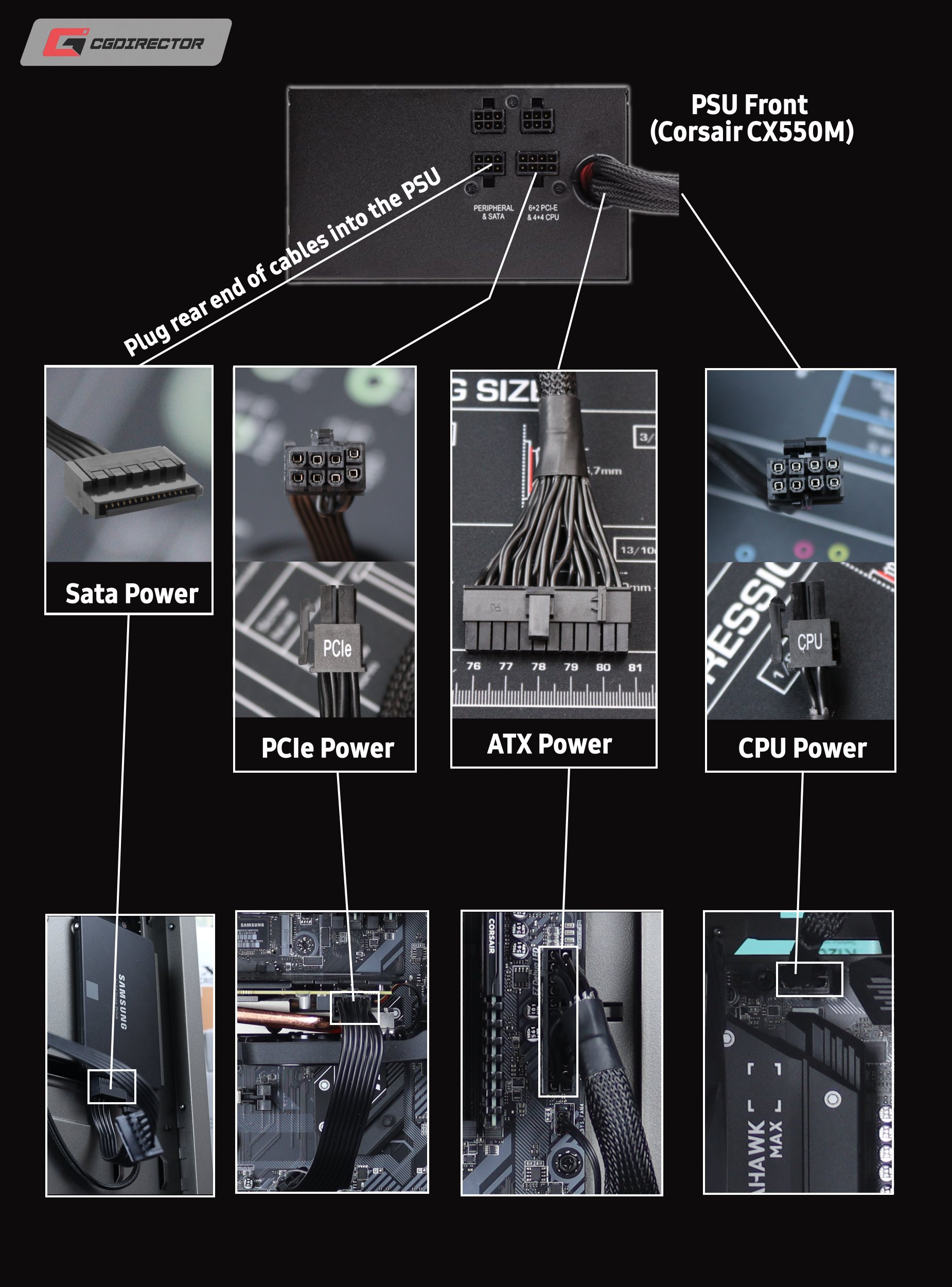 And hera is a agile attend at how I routed the cables through the case. The CPU Power comes up top from behind and the ATX Power comes from the binding through the center Part of the Case to be plugged into its corresponding 24-Pin Plug on the Motherboard .
And hera is a agile attend at how I routed the cables through the case. The CPU Power comes up top from behind and the ATX Power comes from the binding through the center Part of the Case to be plugged into its corresponding 24-Pin Plug on the Motherboard .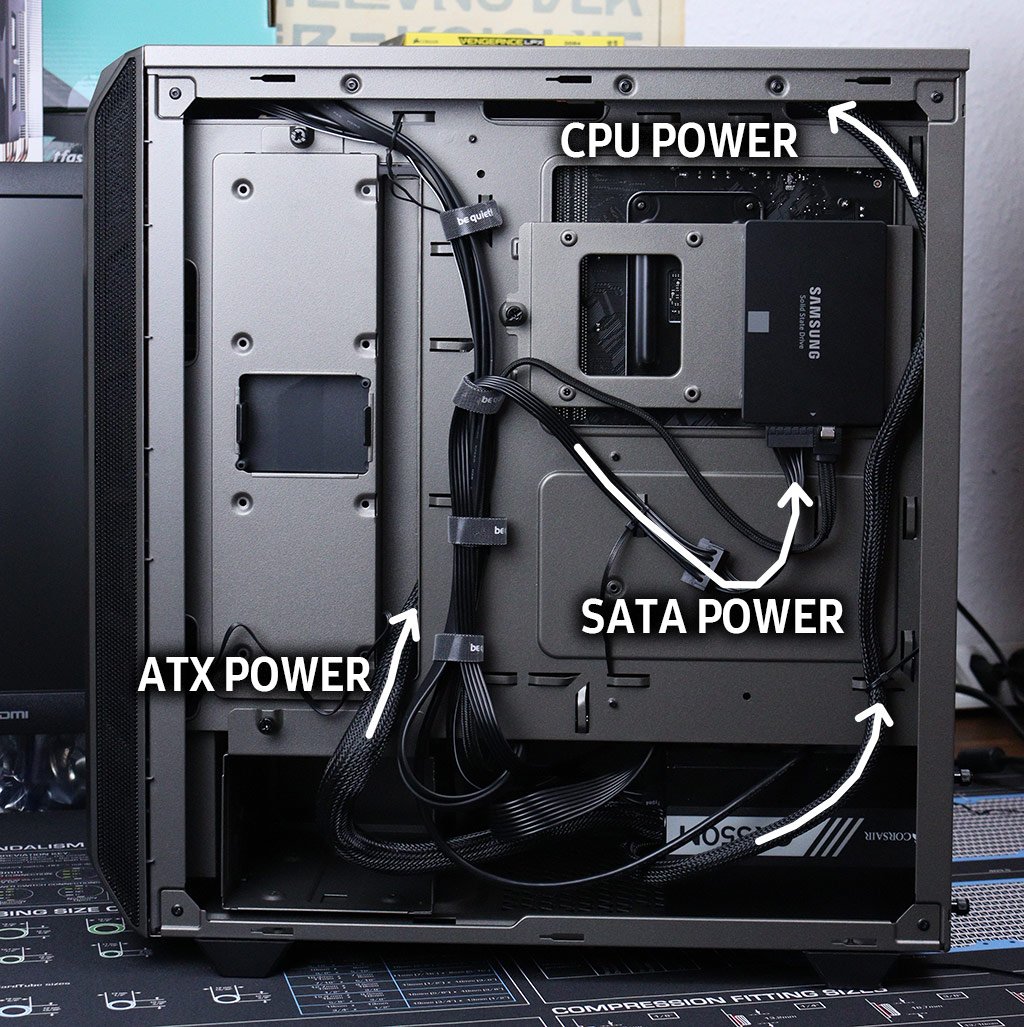

8. Front Panel Buttons and I/O
To get your movement I/O ( the USB and Audio plugs on the battlefront of your Case ) to work, you need to plug in the cables into the motherboard. The front headers are located at the bottom of the motherboard and are labeled. The cables are marked as well. All you need to do is match the names and plug them into the compensate headers. Be careful not to bend the headers when doing so. The cables for front jury lights have a positive and negative. Match them to ensure that your system indicator lights work by rights .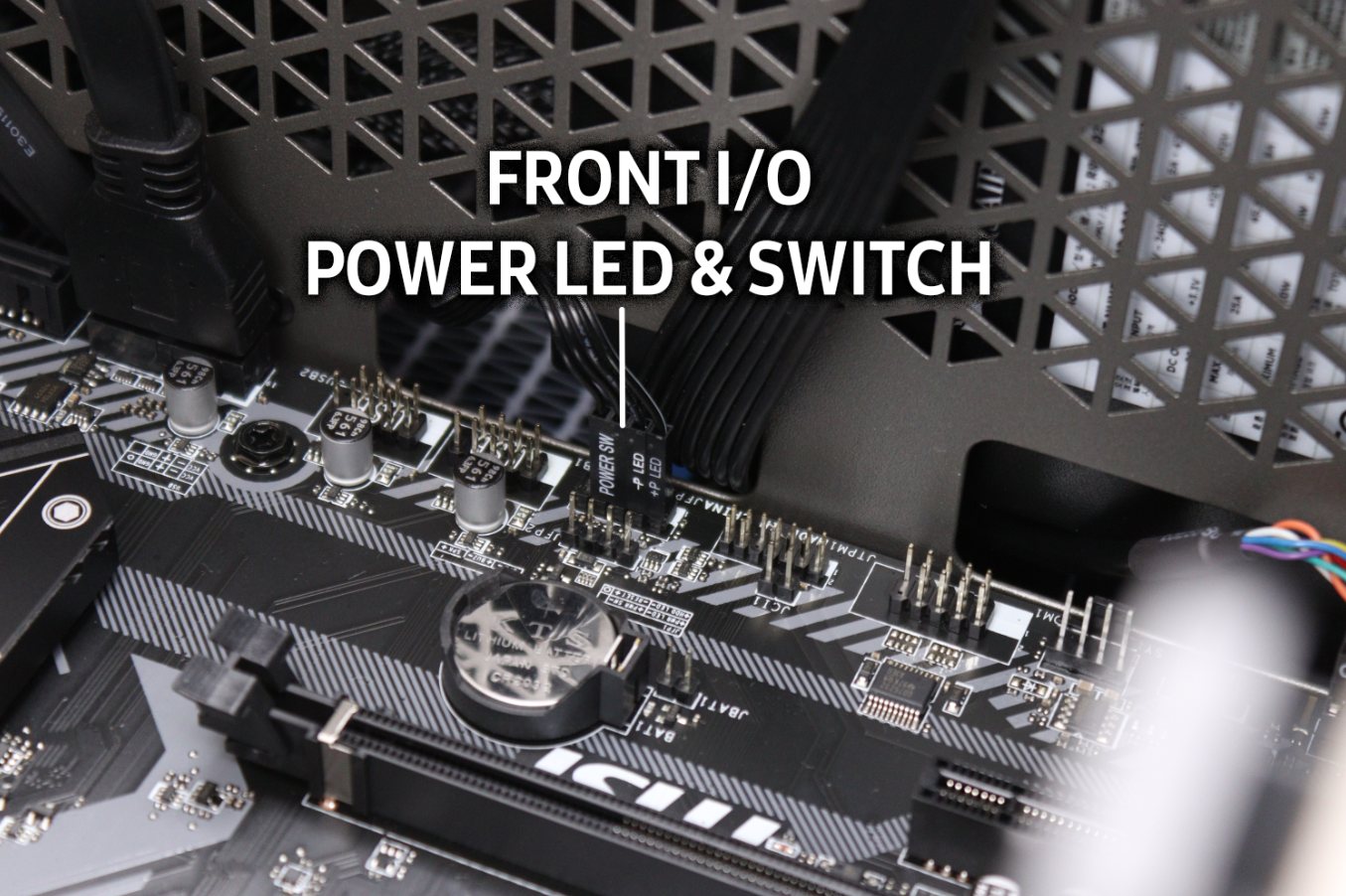 Consult your motherboard manual for detail diagrams and instructions about the same. now that you are in the lower part of the motherboard, you should besides plug in the USB headers and HD audio. These cables will be labeled american samoa well and normally only suit into one specific plug on the Motherboard .
Consult your motherboard manual for detail diagrams and instructions about the same. now that you are in the lower part of the motherboard, you should besides plug in the USB headers and HD audio. These cables will be labeled american samoa well and normally only suit into one specific plug on the Motherboard .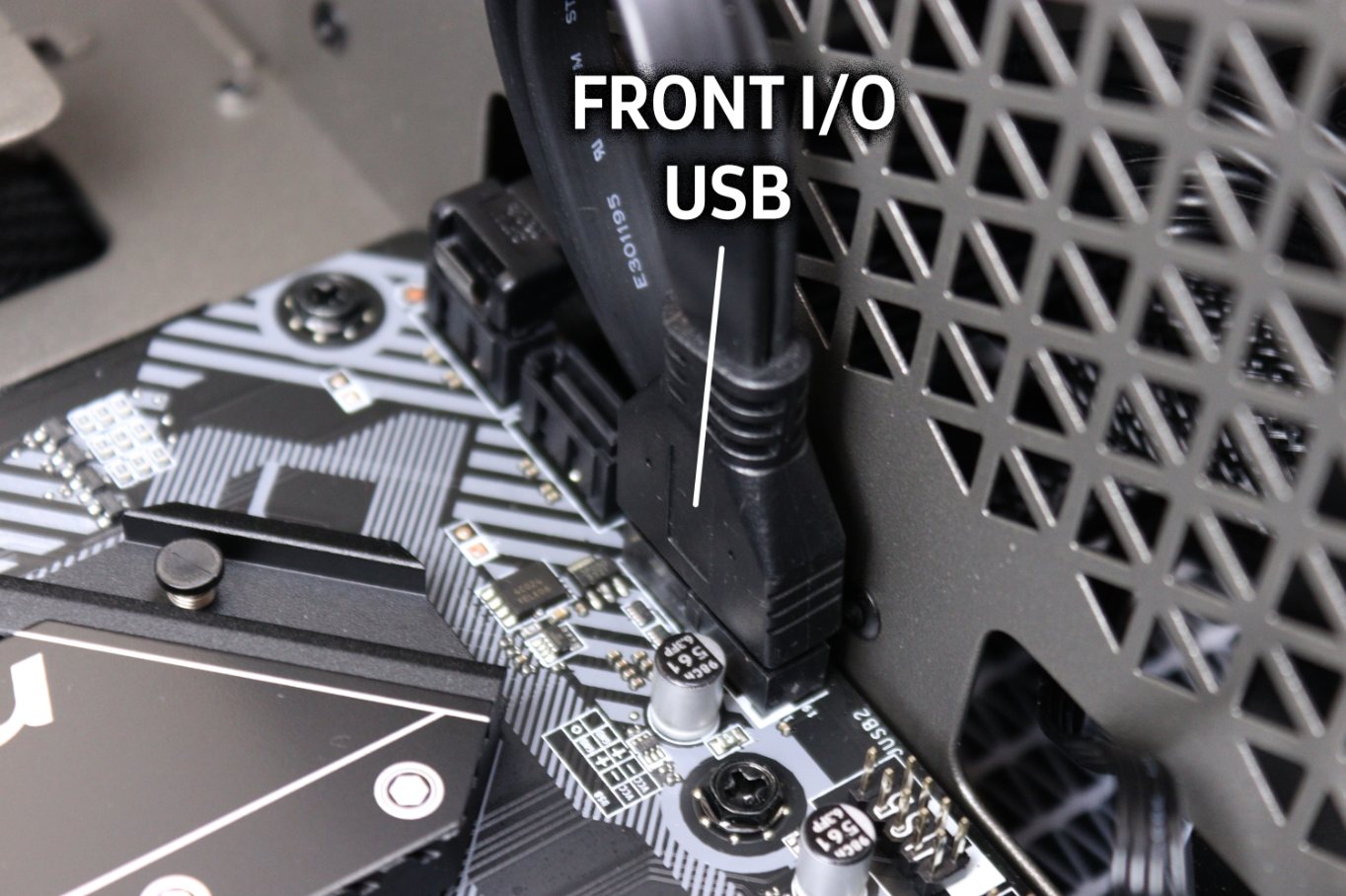
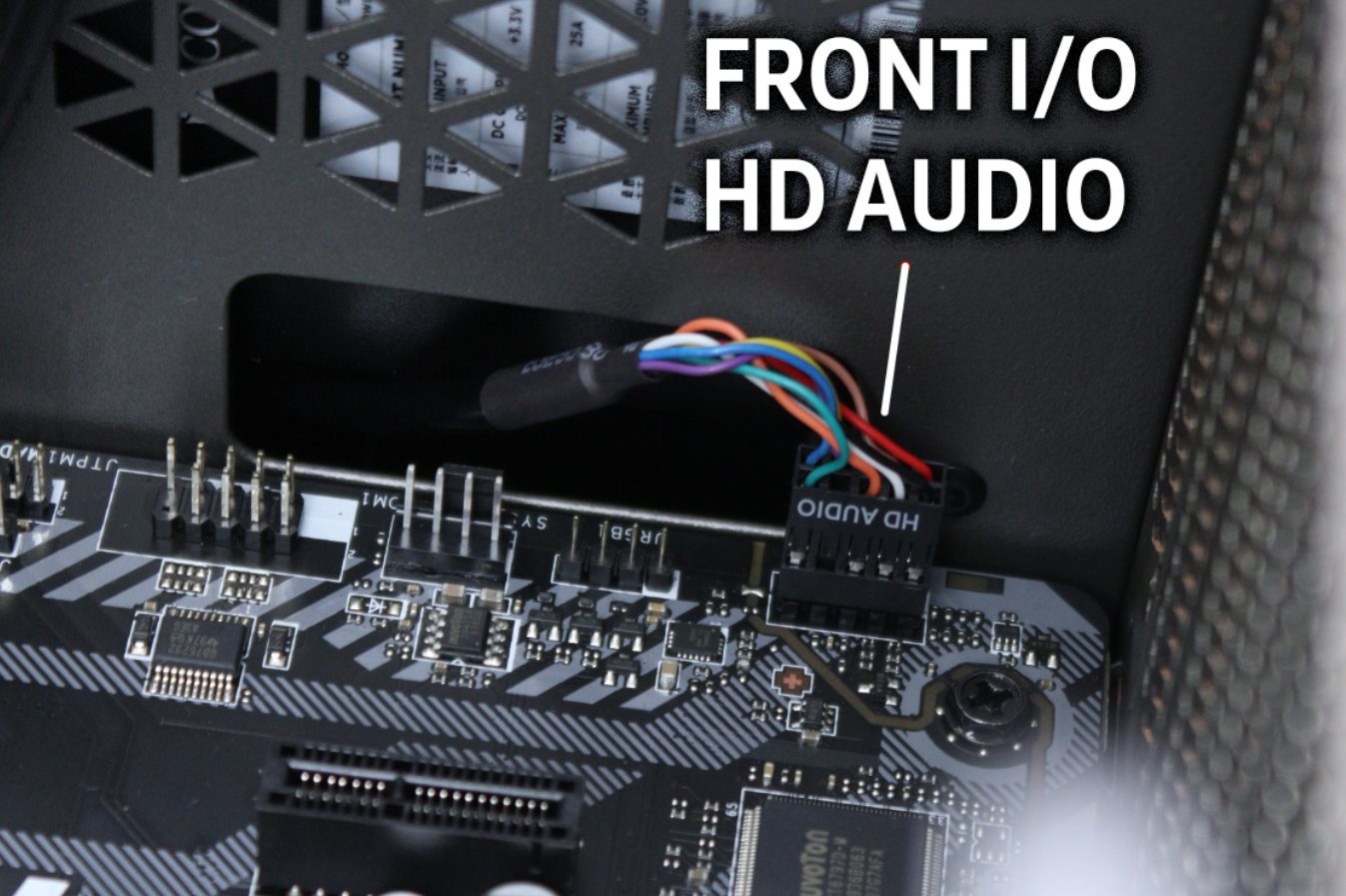
9. Graphics Card
now that we have everything in set, we can install the graphics calling card. Most graphics cards have a dual-slot design, and you need to remove two slots openings at the back of the case for every graphics card you want to install. Free up distance directly behind the PCI-E slot and one below it by unscrewing the screws holding the slot cover in place. Push down the latch of the PCI-E slot you want to use for your graphics tease. This is like to the latch on the RAM slots. ideally, it would be best to use the identical first gear PCI-E slot on your motherboard ( first from the motherboard ’ second I/O ports ). Please notice – some motherboards won ’ t have a push-latch ( at the back of the slot ). It ’ ll slot into place without pushing anything. however, you ’ ll necessitate to apply down imperativeness to a small pry at the back of the slot to get your graphics card out. Align your graphics batting order with the PCI-E slot and gently push it in – you should hear a snap. This tells you that the menu is batten in its slot. once done, secure the graphics card to the case using the prison guard you removed in the former pace. Give your graphics card baron, if needed using the PCI-E power cable from your power supply. If you have a powerful GPU, you ’ ll need two of these connectors for extra baron. These cables will be labeled, so look for ones that say ‘ PCI-E. ’ however, many entry-level cards won ’ t need this ability connection and can draw sufficient ability from the time slot itself. That ’ s it for home PC-Parts, let ’ s close the Case back up :
That’s it! Let’s hook everything up
You can besides make sure that everything works ticket before closing up the Case. If something ’ south ill-timed, you ’ ll have to take the PC apart all over again. Plug a screen door, keyboard, and sneak into the system and if you have a Wifi Stick or LAN cable, plug that in excessively .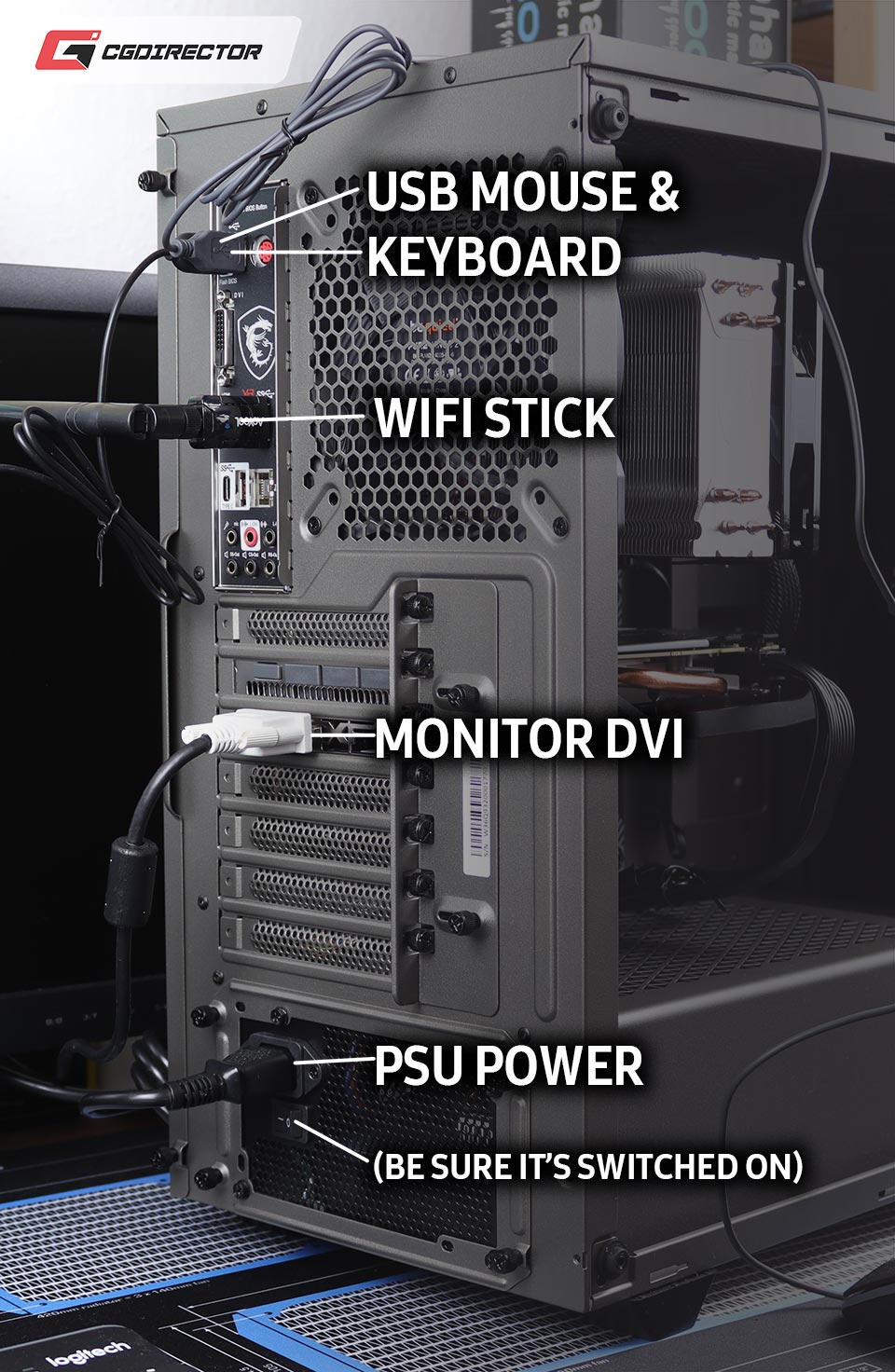 In the image above I used a DVI cable to hook up the Monitor. You might want to use HDMI or DisplayPort which works just angstrom well ( depending on your Monitor ). just be sure the Monitor is plugged into the Graphics Card ( if you have one ) and not the Motherboard. After you have plugged all external cables in correctly, let ’ s do a quick test-boot. Power up the personal computer and Monitor and see what happens. If you ’ re using a new SSD/HDD ( south ), you should see a message like ‘ Operating System not establish. ’ If you see it, we’re good to go! now that we know our System bang, and we won ’ t have to change anything inside the Case anymore, we can close the event back improving. ( If you haven ’ deoxythymidine monophosphate done then already ) Before doing that, you can use cable ties to bunch multiple cables together. cable cut-outs can be used to organize all the different cables. Tie these cables down for a cleaner build. It ’ south quite normal that the cables at the rear of the lawsuit don ’ thyroxine look very nice, but you won ’ deoxythymidine monophosphate see them anyhow. Make sure the front is decent and clean, so the Air is not being blocked in its apparent motion through the encase .
In the image above I used a DVI cable to hook up the Monitor. You might want to use HDMI or DisplayPort which works just angstrom well ( depending on your Monitor ). just be sure the Monitor is plugged into the Graphics Card ( if you have one ) and not the Motherboard. After you have plugged all external cables in correctly, let ’ s do a quick test-boot. Power up the personal computer and Monitor and see what happens. If you ’ re using a new SSD/HDD ( south ), you should see a message like ‘ Operating System not establish. ’ If you see it, we’re good to go! now that we know our System bang, and we won ’ t have to change anything inside the Case anymore, we can close the event back improving. ( If you haven ’ deoxythymidine monophosphate done then already ) Before doing that, you can use cable ties to bunch multiple cables together. cable cut-outs can be used to organize all the different cables. Tie these cables down for a cleaner build. It ’ south quite normal that the cables at the rear of the lawsuit don ’ thyroxine look very nice, but you won ’ deoxythymidine monophosphate see them anyhow. Make sure the front is decent and clean, so the Air is not being blocked in its apparent motion through the encase . If you build your own personal computer, one of the most unmanageable parts that doesn ’ t necessarily impact operation all that much, is cable management. But you ’ ll get the hang of it, don ’ triiodothyronine worry !
If you build your own personal computer, one of the most unmanageable parts that doesn ’ t necessarily impact operation all that much, is cable management. But you ’ ll get the hang of it, don ’ triiodothyronine worry !
Install Windows / an Operating System
now that we have everything in place and your system is booting correctly, the following coherent pace is to install an operate organization. Windows 10 is the most democratic manoeuver System presently available and the one you ’ ll want to install for mod personal computer Parts to work without issues. Modern PCs don ’ t come with an optical campaign so you ’ ll need a USB drive rather. You can either buy Windows 10 and have it delivered on a USB stick already, or download Windows 10 Media Creation Kit on another personal computer and install a Windows 10 picture on one of your own USB drives .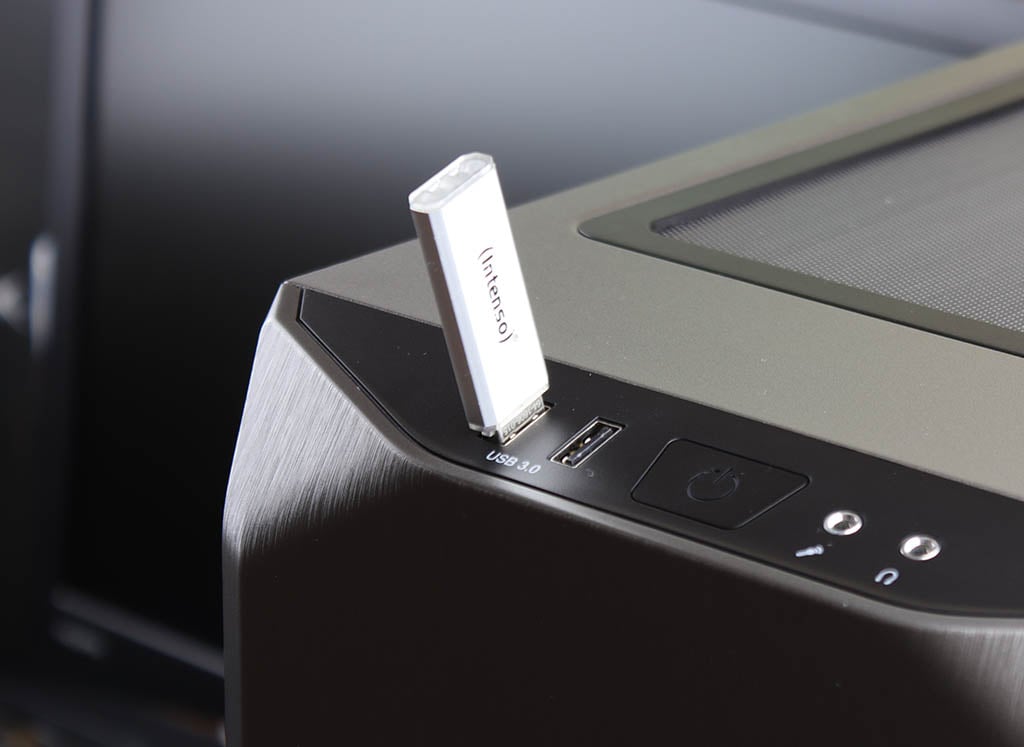 now, plug that USB drive into the new personal computer and kick ( Or if you have an optical drive, boot with the DVD in your DVD Player ). If your personal computer doesn ’ deoxythymidine monophosphate boot from that USB driveway automatically, you ’ ll need to change a few things in your BIOS. enter your BIOS. Depending on your motherboard, you can access it by repeatedly pressing ‘ Delete, ’ ‘ F2, ’ ‘ F1, ’ or ‘ Esc ’ on your keyboard when your system is starting up. Change the boot device precedence and set your finger drive as the first precedence. Some motherboards besides allow you to boot to a specific device by pressing a specified cardinal. Watch for the motherboard flare screen when your system starts for more information. boot from the USB drive and follow the ensuing instructions to install Windows 10. Don ’ deoxythymidine monophosphate worry ; you won ’ t need an activation key at this degree. You can register Windows once the installation completes. The Installation operation is reasonably self-explanatory, but I recorded a television for you to follow along if you need it :
now, plug that USB drive into the new personal computer and kick ( Or if you have an optical drive, boot with the DVD in your DVD Player ). If your personal computer doesn ’ deoxythymidine monophosphate boot from that USB driveway automatically, you ’ ll need to change a few things in your BIOS. enter your BIOS. Depending on your motherboard, you can access it by repeatedly pressing ‘ Delete, ’ ‘ F2, ’ ‘ F1, ’ or ‘ Esc ’ on your keyboard when your system is starting up. Change the boot device precedence and set your finger drive as the first precedence. Some motherboards besides allow you to boot to a specific device by pressing a specified cardinal. Watch for the motherboard flare screen when your system starts for more information. boot from the USB drive and follow the ensuing instructions to install Windows 10. Don ’ deoxythymidine monophosphate worry ; you won ’ t need an activation key at this degree. You can register Windows once the installation completes. The Installation operation is reasonably self-explanatory, but I recorded a television for you to follow along if you need it :
That’s it!
At the beginning, building a personal computer might seem like an impossible job. however, it ’ randomness quite childlike when you take it one step at a fourth dimension. Every component has a function, and slots perfectly into its place. think of it as an advanced LEGO fructify. once you have the compatibility of the CPU, motherboard, and RAM out of the way, things are relatively square. The smasher of a custom personal computer is the flexibility you gain. not only can you allocate the budget precisely where you need, but you besides have an choice of making incremental upgrades in the future. Need more graphics horsepower ? Upgrade your graphics card. Need some supernumerary calculate performance ? Grab a more brawny CPU. You get the mind. If you have any questions about building a PC and/or picking components, feel free to leave a comment below! I’ll do my best to help out. ?
shares


